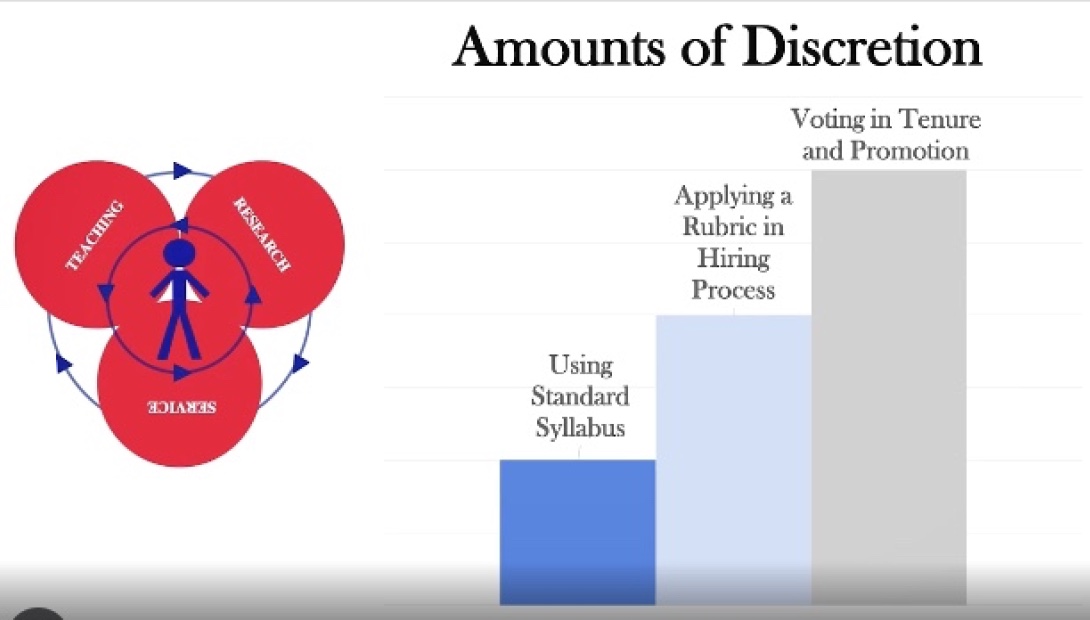Former Faculty Senate President Darrin Hicks and Kate Willink are extending the work of the symposium through a unit-level P &T committee pilot this year. We are now applying our insights in DDM to the tenure and promotion process. As demonstrated in the above visual, research (O’Meara 2020) shows that promotion, tenure, and reappointment committees are areas of significant faculty discretion and are important sites to leverage, check, and structure faculty discretionary spaces to help support equitable decision making. Additionally, our COACHE data shows that clarity on expectations for promotion to full is a growth area for DU. Informed both by national research and DU-specific data, we designed the DDM pilot.
Our rationale and approach:
- P&T is one of the most consequential decisions we make. It is also one of the most difficult. It is imperative that this process be widely considered to be fair, equitable, legitimate and reasonable. We believe that incorporating some proven DDM practices can make it more so.
- Research and experience tell us that a P&T process that is seen as less than fair and reasonable can engender significant negative effects: chilling effects on who goes up for T&P, with disproportionate effects for women and faculty of color; long-lasting negative effects on unit and department climate; and profound effects on how teaching, research and service are valued and embodied.
- So far, we have focused our thinking and designing on three potential sources of tension in the P&T process: the degree to which criteria are made explicit and openly discussed, the variability in who serves on P&T committees, and the facilitation of the deliberations.
- This reflection leads us to believe that the P&T process can be improved by introducing a few DDM best practices: pre-decision deliberation on criteria; interaction norms that ensure all members have equal speaking time and that counteract the effects of formal and informal power differences between committee members; checklists that ensure moments of reflection on the process and necessary modes of contextualization and process monitoring.
- We are working with units to incorporate some proven DDM practices into the P&T process, making sure that we are respectful of the differences in how respective units conduct the P&T process.
Our thanks to CAHSS, GSSW, MCE, CNSM, and RSCES, who are participating in this pilot, and to all faculty serving on P&T committees this year. This is one of the most important activities we do with and for our colleagues.

